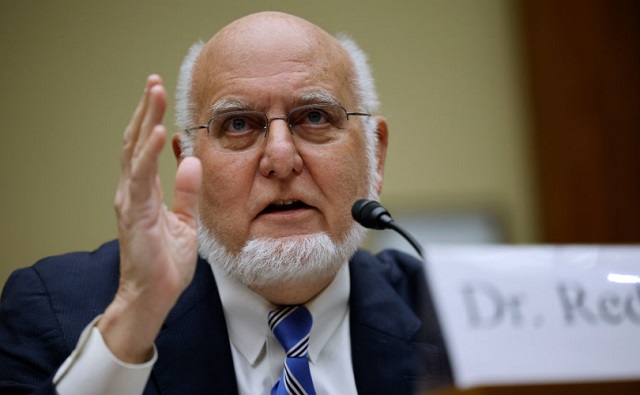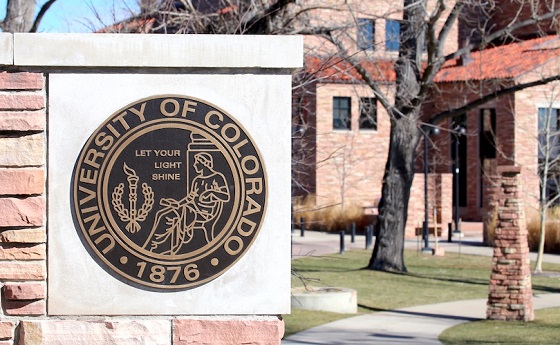COVID-19
Mandating COVID shots ‘one of the greatest mistakes,’ former CDC chief says

From LifeSiteNews
By John-Michael Dumais, The Defender
In a Senate hearing July 11, ex-CDC Director Robert Redfield said mRNA COVID-19 vaccines are ‘toxic’ and should not have been mandated. He also called for a pause on gain-of-function research.
Former Centers for Disease Control and Prevention (CDC) Director Robert Redfield confirmed the dangers of mRNA COVID-19 vaccines in a U.S. Senate hearing on July 11, calling them “toxic” and saying they should never have been mandated.
Redfield’s admissions came during a Senate Committee on Homeland Security and Governmental Affairs hearing on government oversight of taxpayer-funded high-risk virus research.
The late admission of vaccine injuries underscores the failure of public health agencies and the medical establishment to provide informed consent to the billions of vaccine recipients worldwide.
“It’s important that he is telling the truth now,” vaccine researcher Jessica Rose, Ph.D., told The Defender. “Adverse events were hidden and still are being hidden to prevent injection hesitancy.”
Redfield, who led the CDC from 2018 to 2021, didn’t stop there. He declared biosecurity “our nation’s greatest national security threat,” calling for a halt to gain-of-function research pending further debate.
The hearing, which featured contentious exchanges between senators and witnesses, also touched on controversial topics such as the COVID-19 origins lab-leak theory and allegations that health agencies suppressed data.
mRNA vax ‘should have been open to personal choice’
During the hearing Redfield, who oversaw the CDC during the crucial early months of the COVID-19 pandemic, elaborated on his recent statements about mRNA vaccine safety.
“I do think one of the greatest mistakes that was made, of course, was mandating these vaccines,” Redfield said. “They should have never been mandated. It should have been open to personal choice.”
Redfield went further, admitting that the spike protein produced by mRNA vaccines is “toxic to the body” and triggers “a very strong pro-inflammatory response.”
He noted that in his own medical practice, he doesn’t administer mRNA vaccines, preferring “killed protein vaccines” instead.
Redfield’s statements stand in stark contrast to the CDC’s official stance during his tenure, which strongly promoted mRNA vaccine uptake as safe and effective.
Sen. Ron Johnson (R-WI) pressed Redfield on the issue, highlighting concerning data from the Vaccine Adverse Event Reporting System (VAERS). Johnson presented figures showing over 37,000 deaths reported following COVID-19 vaccination, with 24 percent occurring within two days of injection.
Redfield acknowledged there was “not appropriate transparency from the beginning about the potential side effects of these vaccines.” He criticized attempts to “underreport any side effects because they argued that would make the public less likely to get vaccinated.”
I truly appreciated Dr. Redfield’s honesty at the hearing today. pic.twitter.com/X06znrxe12
— Senator Ron Johnson (@SenRonJohnson) July 12, 2024
‘FDA should release all of the safety data’
Redfield’s criticism of data withholding extended beyond vaccine side effects. He expressed disappointment in the U.S. Food and Drug Administration‘s (FDA) handling of vaccine safety information.
“The FDA should release all of the safety data they have,” Redfield said. “I was very disappointed to hear that they were planning to hold on to that until 2026. That really creates a sense of total lack of trust in our public health agencies towards vaccination.”
Johnson echoed these concerns, revealing his frustration with the lack of follow-through by health agencies and the committee itself.
“I’m not getting cooperation out of the chairman of the permanent subcommittee investigation to issue subpoenas to get this,” Johnson said, referring to unreleased data and documents.
The senator displayed a chart comparing adverse event reports for various drugs, including ivermectin and hydroxychloroquine, to those for COVID-19 vaccines. The stark contrast in reported deaths from these therapeutics – with COVID-19 vaccines showing significantly higher numbers – fueled Johnson’s demand for more transparency.
“As important as the cover-up of the origin story is, there’s a lot more that’s being covered up,” Johnson asserted. “The public has a right to know. We pay for these agencies. We pay their salaries. We fund these studies.”
Redfield agreed with Johnson’s assessment, stating that withholding the information is “counterproductive.”
Redfield doubtful of ‘any benefit from [gain-of-function] research’
Redfield’s testimony took another controversial turn when he called for a pause on gain-of-function research, experiments that involve making pathogens more infectious or deadly.
“I’m not aware of any advanced therapeutic or vaccine that has come to pass because of gain-of-function research,” Redfield said. “I do think there has to be a very aggressive debate of whether there’s any benefit from that research.”
Sen. Rand Paul (R-KY) seized on this point, introducing his Risky Research Review Act. The bill aims to establish an independent board within the executive branch to oversee federal funding for high-risk life sciences research.
“If the Risky Research Review Act had been in place, it might have prevented the COVID-19 pandemic,” Paul said, citing Redfield’s endorsement.
MIT’s Kevin Esvelt, Ph.D., inventor of a technique for rapidly evolving proteins and other biomolecules who was also instrumental in developing CRISPR gene-editing technology, reinforced these concerns.
Highlighting gaps in current oversight, he described an experiment where his team – with FBI approval – successfully ordered DNA fragments of the 1918 influenza virus from 36 of 38 providers.
“Everything that we did and the companies did was entirely legal,” Esvelt said, underscoring the potential for misuse. “There are no laws regulating DNA synthesis, even though the industry group, the International Gene Synthesis Consortium, has requested congressional regulation.”
The hearing revealed a growing consensus among witnesses for stricter oversight of potentially dangerous research, with Redfield suggesting such studies should be “highly regulated” to protect national security.
Redfield reaffirms COVID lab-leak theory
The hearing reignited debate over the origins of COVID-19, with Redfield reaffirming his belief in the lab-leak theory.
“Based on my initial analysis, I believe then, and I still believe today, that the COVID infections were the direct result of a biomedical research experiment and subsequent lab leak,” Redfield stated.
This assertion led to a heated exchange between Sen. Josh Hawley (R-MO) and Carrie Wolinetz, Ph.D., former chief of staff to then-director of the National Institutes of Health (NIH) Francis Collins. Hawley accused NIH officials of deliberately suppressing the lab-leak theory.
“Your office, Dr. [Anthony] Fauci and others tried to actively censor them,” Hawley said. “There was a propaganda effort that this paper was the center of, and now everybody says, ‘Oh, well, we just weren’t sure at the time.’”
Hawley referred to the 2020 “Proximal Origin” paper that argued against the lab-leak hypothesis.
Wolinetz defended the NIH’s actions. “I do not believe censorship took place, sir.” She maintained that discussions about the virus’s origins were part of normal scientific discourse.
Redfield, however, criticized the lack of thorough investigation into both natural origin and lab-leak hypotheses. “Unfortunately, this didn’t happen,” he said, adding that four years later, he believes there’s no meaningful evidence supporting a natural origin.
The former CDC director also revealed that he did not learn about concerning biodistribution studies of the vaccine’s lipid nanoparticles until as late as the summer of 2021, suggesting a delay in critical information reaching top health officials.
‘Biosecurity is our nation’s greatest national security threat’
Redfield emphasized the critical importance of biosecurity in national defense.
“In 2024, 2025, biosecurity is our nation’s greatest national security threat,” Redfield stated. “You need to think of it the same way we thought about the verge of nuclear atomic [sic] in the late ‘40s, ‘50s, and ‘60s.”
He called for a proportional response to the threat, suggesting the creation of a dedicated agency within the U.S. Department of Energy to address biosecurity concerns.
“We have a $900 billion Defense Department for the threat of China, North Korea, and Russia,” Redfield noted. “We don’t have really any systematic agency or network of private sector contractors to help us with the biosecurity threat.”
Sen. Roger Marshall (R-KS) echoed this sentiment. “In my humble mind, a viral biosecurity issue is a bigger issue than China’s military threat to us.”
Gerald Parker, DVM, Ph.D., associate dean for Global One Health at Texas A&M University, supported the call for enhanced oversight, recommending “an independent authority to consolidate secure functions in a single entity with a dedicated mission.”
The hearing also touched on the potential for future pandemics, with Redfield repeating his warnings about the potential spread of H5N1 bird flu.
As the hearing concluded, senators from both parties expressed concern over the lack of transparency and oversight in high-risk research.
Paul summarized the sentiment: “We cannot stand idly by. We must demand accountability, strive for transparency, and ensure the safety of our citizens is never again compromised by negligence or deceit.”
This article was originally published by The Defender — Children’s Health Defense’s News & Views Website under Creative Commons license CC BY-NC-ND 4.0. Please consider subscribing to The Defender or donating to Children’s Health Defense.
COVID-19
Trump DOJ seeks to quash Pfizer whistleblower’s lawsuit over COVID shots

From LifeSiteNews
The Justice Department attorney did not mention the Trump FDA’s recent admission linking the COVID shots to at least 10 child deaths so far.
The Trump Department of Justice (DOJ) is attempting to dismiss a whistleblower case against Pfizer over its COVID-19 shots, even as the Trump Food & Drug Administration (FDA) is beginning to admit their culpability in children’ s deaths.
As previously covered by LifeSiteNews, in 2021 the BMJ published a report on insider information from a former regional director of the medical research company Ventavia, which Pfizer hired in 2020 to conduct research for the company’s mRNA-based COVID-19 shot.
The regional director, Brook Jackson, sent BMJ “dozens of internal company documents, photos, audio recordings, and emails,” which “revealed a host of poor clinical trial research practices occurring at Ventavia that could impact data integrity and patient safety […] We also discovered that, despite receiving a direct complaint about these problems over a year ago, the FDA did not inspect Ventavia’s trial sites.”
According to the report, Ventavia “falsified data, unblinded patients, employed inadequately trained vaccinators, and was slow to follow up on adverse events reported in Pfizer’s pivotal phase III trial.” Overwhelmed by numerous problems with the trial data, Jackson filed an official complaint with the FDA.
Jackson was fired the same day, and Ventavia later claimed that Jackson did not work on the Pfizer COVID-19 shot trial; but Jackson produced documents proving she had been invited to the Pfizer trial team and given access codes to software relating to the trial. Jackson filed a lawsuit against Pfizer for violating the federal False Claims Act and other regulations in January 2021, which was sealed until February 2022. That case has been ongoing ever since.
Last August, U.S. District Judge Michael Truncale dismissed most of Jackson’s claims with prejudice, meaning they could not be refiled. Jackson challenged the decision, but the Trump DOJ has argued in court to uphold it, Just the News reports, with DOJ attorney Nicole Smith arguing that the case concerns preserving the government’s unfettered power to dismiss whistleblower cases.
The rationale echoes a recurring trend in DOJ strategy that Politico described in May as “preserving executive power and preventing courts from second-guessing agency decisions,” even in cases that involve “backing policies favored by Democrats.”
Jackson’s attorney Warner Mendenhall responded that the administration “really sort of made our case for us” in effectively admitting that DOJ is taking the Fair Claims Act’s “good cause” standard for state intervention to mean “mere desire to dismiss,” which infringes on his client’s “First Amendment right to access the courts, to vindicate what she learned.”
Mendenhall added that in a refiled case, Jackson “may be able to bring a very different case along the same lines, but with the additional information” to prove fraud, whereas rejection would send the message that “if fraud involves government complicity, don’t bother reporting it.”
That additional information would presumably include the FDA’s recent admission that at least 10 children the agency has reviewed so far “died after and because of receiving COVID-19 vaccination.”
“The truth is we do not know if we saved lives on balance,” admitted FDA Chief Medical Officer Vinay Prasad in a recent leaked email. “It is horrifying to consider that the U.S. vaccine regulation, including our actions, may have harmed more children than we saved. This requires humility and introspection.”
The COVID shots have been highly controversial ever since the first Trump administration’s Operation Warp Speed initiative prepared and released them in a fraction of the time any previous vaccine had ever been developed and tested. As LifeSiteNews has extensively covered, a large body of evidence has steadily accumulated over the past five years indicating that the COVID jabs failed to prevent transmission and, more importantly, carried severe risks of their own.
Ever since, many have intently watched and hotly debated what President Donald Trump would do about the situation upon his return to office. Though he never backed mandates like former President Joe Biden did, for years Trump refused to disavow the shots to the chagrin of his base, seeing Operation Warp Speed as one of his crowning achievements. At the same time, during his latest run he embraced the “Make America Healthy Again” movement and its suspicion of the medical establishment more broadly.
So far, Trump’s second administration has rolled back several recommendations for the shots but not yet pulled them from the market, despite hiring several vocal critics of the COVID establishment and putting the Department of Health & Human Services under the leadership of America’s most prominent anti-vaccine advocate, Robert F. Kennedy Jr. Most recently, the administration has settled on leaving the current jabs optional but not supporting work to develop successors.
In a July interview, FDA Commissioner Marty Makary asked for patience from those unsatisfied by the administration’s handling of the shots, insisting more time was needed for comprehensive trials to get more definitive data.
COVID-19
University of Colorado will pay $10 million to staff, students for trying to force them to take COVID shots

From LifeSiteNews
The University of Colorado Anschutz School of Medicine caused ‘life-altering damage’ to Catholics and other religious groups by denying them exemptions to its COVID shot mandate, and now the school must pay a hefty settlement.
The University of Colorado’s Anschutz School of Medicine must pay more than $10.3 million to 18 plaintiffs it attempted to force into taking COVID-19 shots despite religious objections, in a settlement announced by the religious liberty law firm the Thomas More Society.
As previously covered by LifeSiteNews, in April 2021, the University of Colorado (UC) announced its requirement that all staff and students receive COVID jabs, leaving specific policy details to individual campuses. On September 1, 2021, it enforced an updated policy stating that “religious exemption may be submitted based on a person’s religious belief whose teachings are opposed to all immunizations,” but required not only a written explanation why one’s “sincerely held religious belief, practice of observance prevents them” from taking the jabs, but also whether they “had an influenza or other vaccine in the past.”
On September 24, the policy was revised to stating that “religious accommodation may be granted based on an employee’s religious beliefs,” but “will not be granted if the accommodation would unduly burden the health and safety of other Individuals, patients, or the campus community.”
In practice, the school denied religious exemptions to Catholic, Buddhist, Eastern Orthodox, Evangelical, Protestant, and other applicants, most represented by Thomas More in a lawsuit contending that administrators “rejected any application for a religious exemption unless an applicant could convince the Administration that her religion ‘teaches (them) and all other adherents that immunizations are forbidden under all circumstances.’”
The UC system dropped the mandate in May 2023, but the harm had been done to those denied exemptions while it was in effect, including unpaid leave, eventual firing, being forced into remote work, and pay cuts.
In May 2024, a three-judge panel of the U.S. Tenth Circuit Court of Appeals rebuked the school for denying the accommodations. Writing for the majority, Judge Allison Eid found that a “government employer may not punish some employees, but not others, for the same activity, due only to differences in the employee’s religious beliefs.”
Now, Thomas More announces that year-long settlement negotiations have finally secured the aforementioned hefty settlement for their clients, covering damages, tuition costs, and attorney’s fees. It also ensured the UC will agree to allow and consider religious accommodation requests on an equal basis to medical exemption requests and abstain from probing the validity of applicants’ religious beliefs in the future.
“No amount of compensation or course-correction can make up for the life-altering damage Chancellor Elliman and Anschutz inflicted on the plaintiffs and so many others throughout this case, who felt forced to succumb to a manifestly irrational mandate,” declared senior Thomas More attorney Michael McHale. “At great, and sometimes career-ending, costs, our heroic clients fought for the First Amendment freedoms of all Americans who were put to the unconscionable choice of their livelihoods or their faith during what Justice Gorsuch has rightly declared one of ‘the greatest intrusion[s] on civil liberties in the peacetime history of this country.’ We are confident our clients’ long-overdue victory indeed confirms, despite the tyrannical efforts of many, that our shared constitutional right to religious liberty endures.”
On top of the numerous serious adverse medical events that have been linked to the COVID shots and their demonstrated ineffectiveness at reducing symptoms or transmission of the virus, many religious and pro-life Americans also object to the shots on moral grounds, due to the ethics of how they were developed.
According to a detailed overview by the pro-life Charlotte Lozier Institute, Pfizer, Moderna, and Johnson & Johnson all used fetal cells derived from aborted babies during their COVID shots’ testing phase; and Johnson & Johnson also used the cells during the design and development and production phases. The American Association for the Advancement of Science’s journal Science and even the left-wing “fact-checking” outlet Snopes have also admitted the shots’ abortion connection, which gives many a moral aversion to associating with them.
Catholic World Report notes that similarly large sums have been won in other high-profile lawsuits against COVID shot mandates, including $10.3 million to more than 500 NorthShore University HealthSystem employees in 2022 and $12.7 million to a Catholic Michigander fired by Blue Cross Blue Shield in 2024.
-

 COVID-192 days ago
COVID-192 days agoTrump DOJ seeks to quash Pfizer whistleblower’s lawsuit over COVID shots
-

 Alberta2 days ago
Alberta2 days agoAlberta introducing three “all-season resort areas” to provide more summer activities in Alberta’s mountain parks
-

 Agriculture2 days ago
Agriculture2 days agoGrowing Alberta’s fresh food future
-

 International2 days ago
International2 days agoTrump admin wants to help Canadian woman rethink euthanasia, Glenn Beck says
-

 Alberta2 days ago
Alberta2 days agoThe case for expanding Canada’s energy exports
-

 Censorship Industrial Complex2 days ago
Censorship Industrial Complex2 days agoOttawa’s New Hate Law Goes Too Far
-

 Business2 days ago
Business2 days agoFuelled by federalism—America’s economically freest states come out on top
-

 Automotive1 day ago
Automotive1 day agoPoliticians should be honest about environmental pros and cons of electric vehicles






